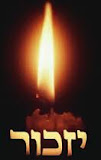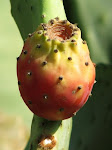Karlo Vivary
Once, in Durban, South Africa, I wished to visit the famous indian market, so I asked someone who seemed to to be of indian descent (there's a large indian community in this city) to direct me to my desired destination.
He said to me: "you're on the right street; it's a long street but just keep going straight and looking down. By the quantity of litter on the pavement, you'll know when you're close to the indian market". His words about the litter made me smile and put me into a good mood.
He said to me: "you're on the right street; it's a long street but just keep going straight and looking down. By the quantity of litter on the pavement, you'll know when you're close to the indian market". His words about the litter made me smile and put me into a good mood.
In Bucharest, Romania, there's the museum of the Village, and the museum of the romanian Peasant. The first is an open air museum displaying rural homes, the other one displays traditional costumes, ceramic,wood ,and iron objects of rural Romania.
For some reason, (probably because both deal with rural aspects) I confused the two, asked the wrong question and reached the wrong place, but as a result of this confusion I got to visit both museums. My gain and pleasure.
In Karlo Vivary, the Czech republic, I almost lost the last bus back to Prague. Here I felt for the first time the meaning of language barrier. People got me in such a mess with their inaccurate directions, that even the street map couldn't save me.The signs everywhere were in the czech language only.
For a woman alone it could be dangerous to ask for help on the street, but one has to use one's common sense and know how to avoid certain people and situations.
For some reason, (probably because both deal with rural aspects) I confused the two, asked the wrong question and reached the wrong place, but as a result of this confusion I got to visit both museums. My gain and pleasure.
In Karlo Vivary, the Czech republic, I almost lost the last bus back to Prague. Here I felt for the first time the meaning of language barrier. People got me in such a mess with their inaccurate directions, that even the street map couldn't save me.The signs everywhere were in the czech language only.
For a woman alone it could be dangerous to ask for help on the street, but one has to use one's common sense and know how to avoid certain people and situations.





















































